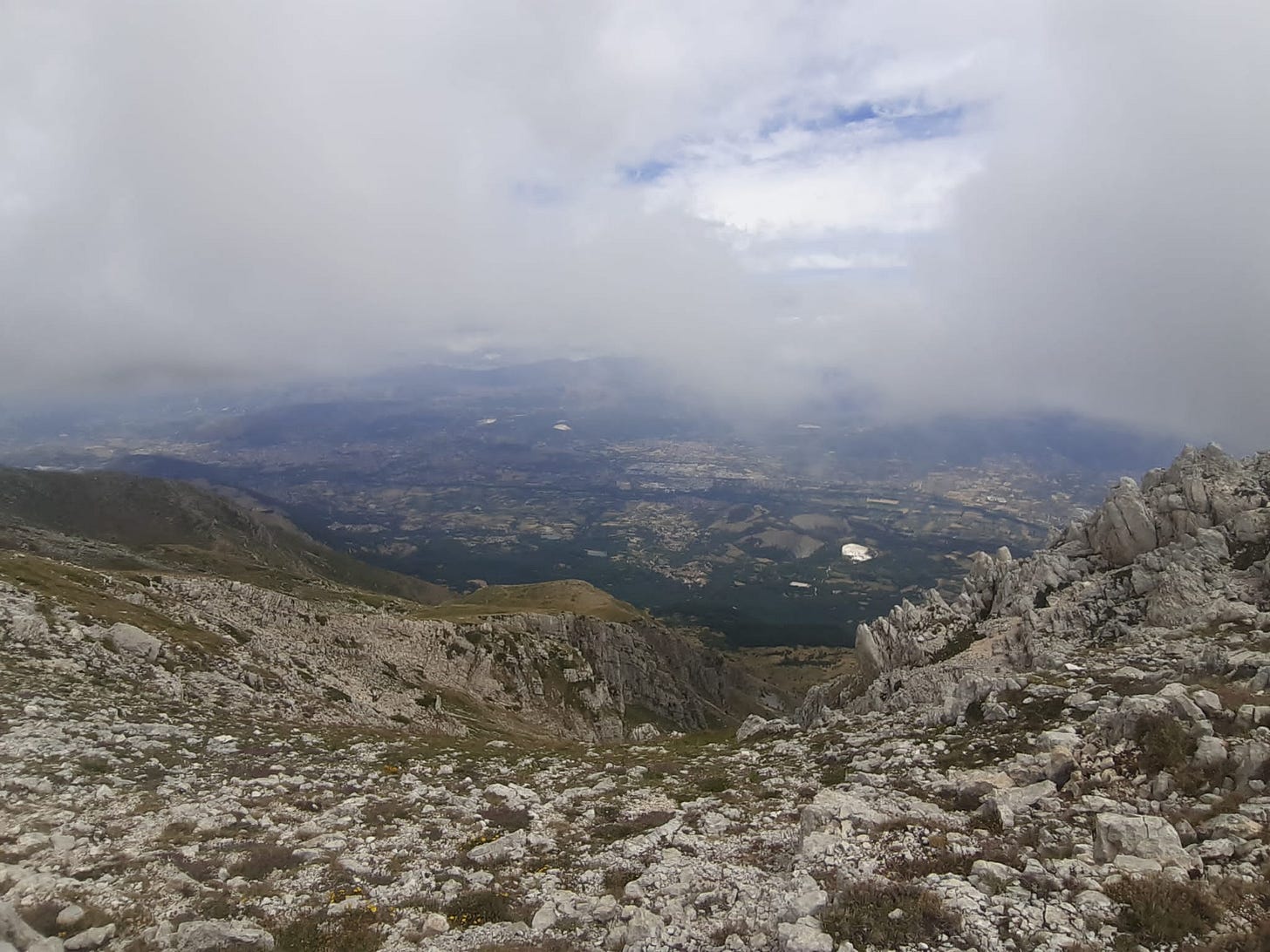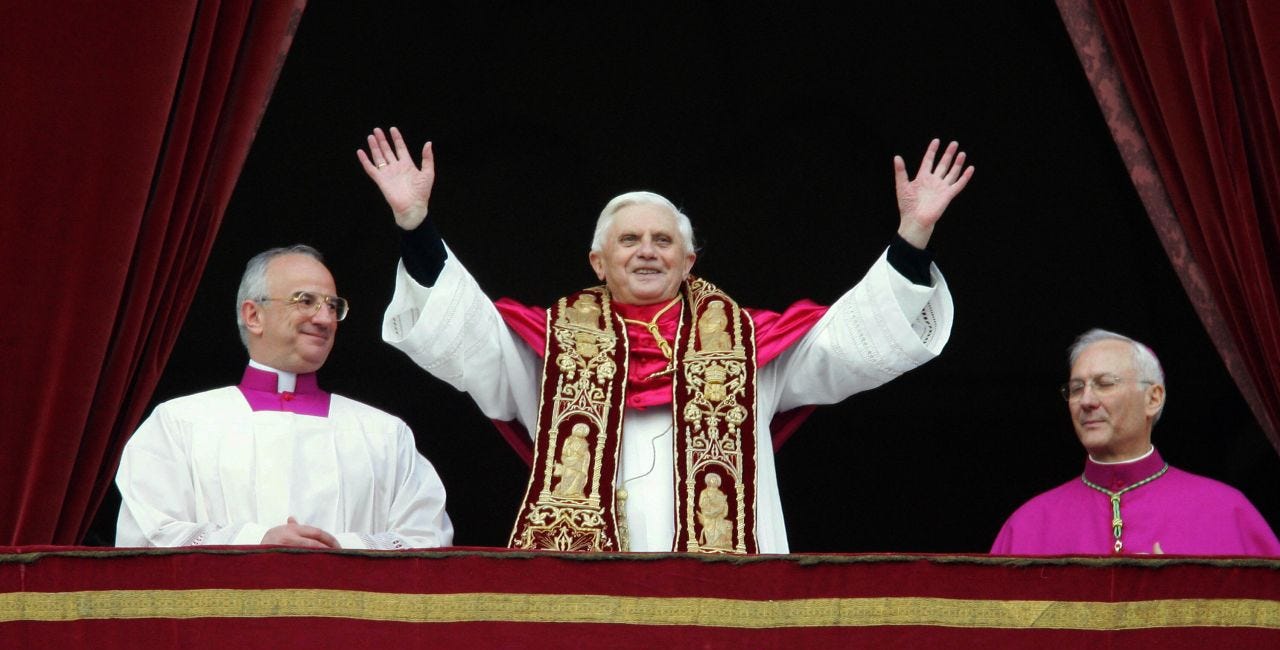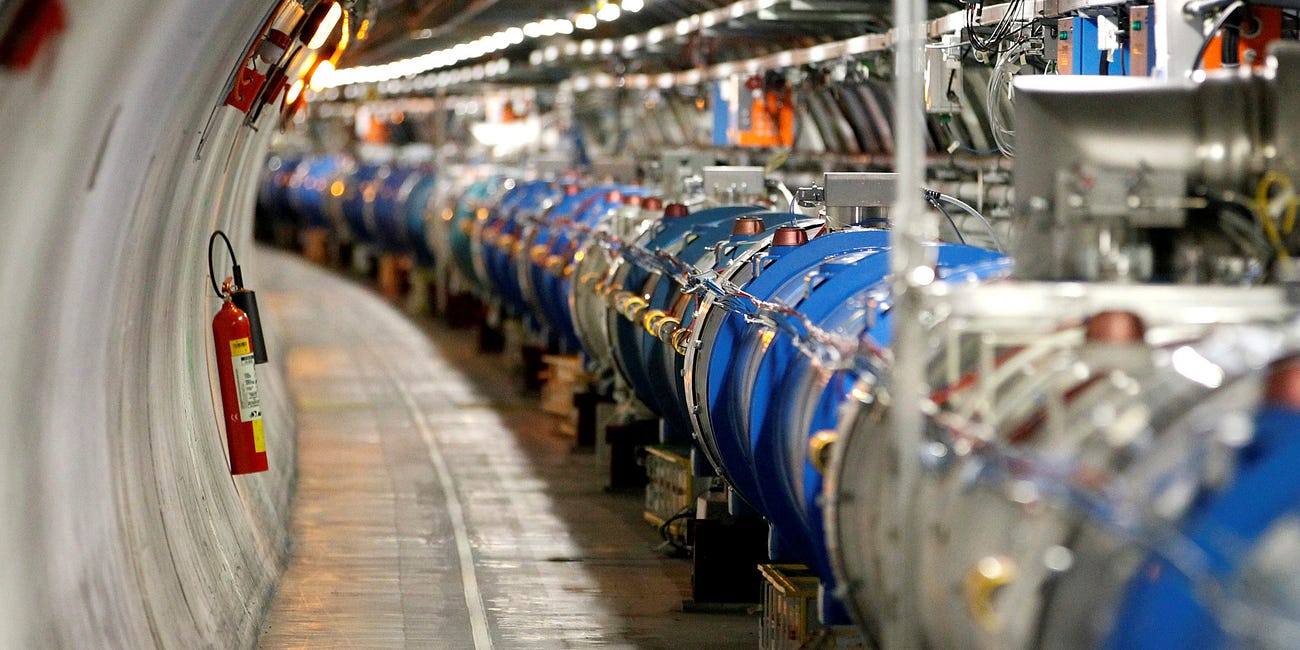Men esteem truth remote, in the outskirts of the system, behind the farthest star, before Adam and after the last man. In eternity there is indeed something true and sublime. But all theses times and places and occasions are now and here. God himself culminates in the present moment, and will never be more divine in the lapse of all the ages. And we are enabled to apprehend at all what is sublime and noble only by the perpetual instilling and drenching of the reality that surrounds us.
— Henry David Thoreau, Walden
The notes and essays that have emerged here over the past two-and-a-half years are mostly spontaneous reverberations from all-too-rare moments of “instilling and drenching of the reality that surrounds me.” They were not composed according to any pre-set plan (and when I did attempt such a plan in 2022, it collapsed after the second post). But looking back over the whole archive, one finds some recurring themes beginning to take shape as a more coherent line of thought.
In a way, the 2021 Christmas essay encapsulates everything I have written here:
The Light of Christmas
O Rising Sun, splendor of eternal light and sun of justice: come and illumine those who sit in darkness and the shadow of death. — Magnificat antiphon, Vespers of 21 Dec Do not judge anything before the time, until the Lord comes, who will illuminate the hidden things of darkness and manifest the counsels of the heart; and then each thing will receive p…
This post deals with the darkness of the world and the coming of the light, drawing on the contemplation of the visible cosmos, as interpreted through the texts of the Christian liturgy. These same four elements recur throughout this substack, and I find that they provide a sufficient basis for an (almost) exhaustive classification of all the essays published here so far. Each category is rooted in one longer series of posts, providing my overall view of the topic, with a variety of one-off posts developing specific aspects. What follows is a rough map of this site, following this strategy:
The Darkness: The Crisis of Modernity
For an overall synthesis of the current state of Western culture and its near-term trajectory, Romano Guardini’s analysis in Das Ende der Neuzeit remains unparalleled for its unique combination of brevity, depth and comprehensiveness. I provided a four-part summary of that book back in 2021:
Technology and Responsibility (Part 1 of 4)
The wilderness in its original form has been conquered: untamed nature is reduced to obedience. But it returns once more within human culture, arising from the very factor that had defeated it: technological power itself. — Romano Guardini, 1950 The Second World War, culminating in the inaugural deployment of at…
After a hiatus after the end of the Cold War, these themes have come roaring back into popular culture, filling a good chunk of the blogosphere — so much so that it’s hard to see the point of continuing to repeat the same diagnoses. But there is a niche of interesting source material that remains woefully understudied: the magisterium of the Roman Pontiffs on the technological question. The only monograph I have encountered so far on the topic is a doctoral dissertation from 2012, which led me to a fascinating series of radio addresses by Pope Pius XII, from around the same time as the publication of Guardini’s book:
Exorcising the Technical Spirit
The end of World War II saw the world divided into two quasi-omnipotent empires, each claiming the mantle of science, progress and reason. The competition between these empires motivated an extraordinary acceleration in the global integration and rationalization of industrial production. But the war itself, culminating in the devastation of the atomic b…
The last two Popes have continued developing these ideas along similar lines, especially in Pope Benedict’s Spe Salvi and Pope Francis’ Laudato Si’:
Spe Salvi
The writings of the late Pope Benedict XVI set the basic architecture of my outlook on modernity. This was especially clear to me as I re-read his encyclical Spe Salvi today, remembering how that text directly inspired my first full college essay in the Freshman Writing Seminar at Princeton. Here are a few excerpts from the middle part of the encyclical…
Laudato Si'
Before diving in to the project I promised in my New Year’s post, I want to give one final reflection to conclude last year’s series on technology and responsibility. That series was based on the observations of German philosopher-theologian Romano Guardini on the transition to post-modernity, as formulated in his 1950 book
The Light: Christ as Savior
While commentary on the darkness is not hard to find, credible discourse on the light is much more scarce. Christians profess that Christ is the light of the world — the savior of the world — but this salvific activity is often relegated to a realm of supernatural abstraction. Salvation becomes a matter of what happens after death, and has nothing to do with the present darkness we feel around us. My own awareness of the immediate concreteness of the work of Christ has taken shape under the influence of the teachings of St. Josemaría Escrivá, and I dedicated a long series of posts this summer to presenting my own reading of his doctrine on the dynamics of the light:
Camino (part 1)
The philosophers have only interpreted the world, in various ways; the point is to change it. — Karl Marx, Theses on Feuerbach, XI The French Revolution left a deep mark on European thought, by demonstrating that the world can change. The events of 1789 really did change our world, profoundly altering the set of background assumptions that shape how that …
But already in the first year of this Substack, I published a couple of entries sketching some aspects of the light and our own participation in its arrival. These pieces engage with the “Benedict Option” literature that has grown up in the wake of Rod Dreher’s influential book. The first uses Dreher’s image of Benedict as a jumping-off point for discussing the social and civilizational relevance of the Christian liturgy, drawing on the rich liturgical magisterium of Pope Benedict:
The Benedict (XVI) Option
Elected to the See of Peter in 2005, Joseph Ratzinger chose a name – Benedict – which conveys a deep consciousness of standing at the end of an age. The name refers in the first place to the sunset of the Roman Empire, when Saint Benedict of Nursia laid the foundations of Christian Europe through his monastic rule. It refers also to the end of the moder…
The second of these posts summarizes an important essay of Vaclav Havel, which Dreher relies on for much of the overall socio-psychological framework undergirding his thesis:
The Power of the Powerless
In his 1978 essay, “The Power of the Powerless,” Czech dissident Vaclav Havel lays out a strategy for confronting the apparently invincible power of a scientifically managed global empire. In his day, the empire in question was the USSR, while the United States led the “free world.” But Havel explains that the sociological and moral roots of Soviet tota…
Among Christians aware of the Benedict Option, many see the strategy I outline in the “Camino” essays as radically opposed to this proposal. In fact, when Dreher’s thesis is examined in detail, the divergences are not so immediately evident — and in these posts my evaluation of his thesis is generally positive. But there is still an important difference in theological posture, and I hope to write something in the near future attempting to tease this out.
The Cosmos: Scientific Contemplation
To understand the darkness and the light and our own role within the drama, we have two primary sources of data available to us. “Data,” etymologically refers to things that are “given,” and Christian theology has always understood both of these sources as gifts, as channels of personal communication from the ultimate Giver. The first is the natural world, the relatively stable work of God that precedes us and sustains us, forming the material context in which we can live and act. The second is the dynamic and creative work of God within human history, leading the cosmos to its ultimate destiny. The last two themes of this substack deal with these two sources, reflecting on our means of access to them and on the central aspects of the teaching they convey.
Modern science falls within the scope of the first of these themes, though without exhausting it. My main series of essays in this category deals specifically with the role of physics, explaining why it plays an essential and irreplaceable role in the contemplation of our cosmic context, even if the dream of comprehensive explanation based on universal mathematical laws is no longer viable:
Why physics still matters
[Part 2 →] What is physics? In a world of machine learning, results-oriented education, and growing skepticism about the value of basic research, this question daily takes on increasing urgency. Why should billions of dollars continue to flow from taxpayers into physics departments, when big data and machine learning promise quicker answers to immediate …
In a second series, published in the spring of this year, I looked at the way late antique and medieval Christian writers thought about the structure of the visible cosmos, before the rise of what we now call science. I drew particular attention to the way that these thinkers open a path forward for biology after the Modern Synthesis. This is an avenue that I am still actively pursuing, particularly as regards the last author treated here, Saint Maximus the Confessor:
After Darwin (part 1)
Let us understand, once and for all, that the ethical progress of society depends, not on imitating the cosmic process, and still less in running away from it, but in combating it. — T. H. Huxley, “Evolution and Ethics,” 1893 With this declaration, “Darwin’s Bulldog” lays his finger on a defining characteristic of the modern scientific worldview. As he ex…
The Liturgy: Biblical Contemplation
The last of these four categories deals with the second source of understanding, which is the collective memory of God’s ongoing creative and unpredictable activity in brining the world to its intended goal. This memory is transmitted through the celebration of the liturgy, principally in the Passover, as fulfilled in the new Passover instituted by Jesus and continued in the Mass. The most authoritative texts studied by Christian and Jewish theologians are texts written to be read within these celebrations, and it is fair to describe the specific task of the theologian as that of interpreting the celebration, facilitating the full participation in this collective memory for people in different times and places.
The opening post of this substack, back in August of 2021, sketched the overall cosmovision that emerges from the liturgy of Baptism, answering some fundamental questions raised by scientific observation (particularly by thermodynamics):
Water and Spirit (Part 1 of 4)
In the beginning God created heaven, and earth. And the earth was void and empty, and darkness was upon the face of the deep; and the spirit of God moved over the waters. (Gn 1:1) Jesus answered: Amen, amen I say to thee, unless a man be born again of water and the Holy Ghost, he cannot enter into the kingdom of God. (Jn 3:5)
In 2022, I attempted to continue this kind of reflection in a more systematic way, focusing on the role of finite beings in mediating the creative action of God in history. I did not get very far, but managed to produce one post dealing with the core texts of the Jewish liturgy — again using thermodynamics as my hermeneutical lens:
Our God is a consuming fire
As the old materialism wanes, an older desire is reborn: to transcend the limits of our finite existence and reach its infinite and absolute source. But modernity has left us skeptical of the traditional doctrines and practices that claim to mediate contact with the divine, transmitted from one generation to the next through ancient hierarchical institu…
Finally, I experimented this year with a foray into the kind of meta-reflection on liturgical practice that is fashionable in contemporary theology, under the label of “historical theology” or “historical-critical” analysis of sacred texts. The aim here (in my own terms) is to use the liturgical text to shed light on the character of the celebration in the distant past. In this case, I looked at what it meant for Christians of the first centuries to worship Jesus as God in their Sunday rituals:
Then you will know that I AM
Today is the feast of the Exaltation of the Holy Cross, commemorating the day in 335 AD when the wood on which Jesus was nailed, rediscovered in an excavation directed by the Emperor’s mother after three centuries hidden in a cave, was displayed to the people of Jerusalem outside the
Looking ahead
For the coming year, I plan to keep posting as sporadically and charismatically as I have until now. I will also begin to include links to my academic writing, as I finish my license in theology and begin to publish more serious scholarly work. The first such publication came out a few months ago, and can be found here.
I would also like to write more commentary on Thoreau and Walden, since that book is filled with spectacular theological insights, but we’ll see when I end up finding time for that.
For now, a Merry Christmas and a happy new year to you all!
















